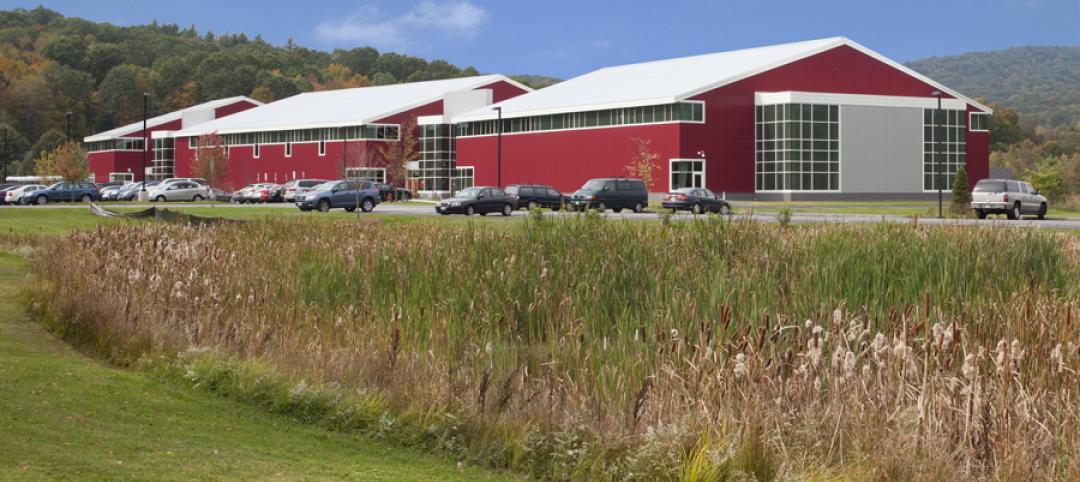The American Institute of Architects and MIT’s Center for Advanced Urbanism today announced the completion of their initial research report on eight cities and urban health, and laid out a path for translating this research into meaningful findings for policy makers and urban planners. You can see the full report here.
More than half of the world’s inhabitants live in urban areas, and this is projected to grow to 70 percent by 2050. Massive urbanization can negatively affect human and environmental health in unique ways, and many of those effects can be addressed through the realm of design. Some of the great health challenges over the next century, including the prevalence of obesity, asthma, cardiovascular disease, diabetes, and depression, among others, are both increasing at an alarming rate and frequently linked to socioeconomic factors, physical design and urban environmental factors.
“What this research represents is our first attempt to examine an array of urban health matters in eight major metropolitan areas in the United States, and to suggests a wide array of possible remedies, from better transportation planning to landscape retrofits,” said AIA Chief Executive Officer Robert Ivy, FAIA. “As we go forward, this collaboration will seek design recommendations that can be individualized to urban markets.”
“I would like in particular to congratulate the dozen or so students at MIT’s Center for Advanced Urbanism and in particular Alan Berger, professor of landscape architecture and urban design, and Andrew Scott, associate professor of architecture, for the incredible amount of effort and insight that went into compiling this report,” Ivy said.
“This research begins to unearth a truth that urban planners for many years have not realized, which is that there is no silver bullet for urban health,” says Adèle Naudé Santos, Dean of the School of Architecture + Planning at MIT. “Every city has different socioeconomic and physical layout issues. So the solution to make urban health better is going to [vary] in every city. One of the reasons we wrote the report was to give people a sense that the silver-bullet mentality, from technological or policy perspectives, needs to stop.”
“If we really want to look at urban health, we have to look across the entire metropolitan area that’s been urbanized in order to address the systems that make it perform,” said Berger. “You can’t look at a building without thinking about how people get to that building. The holistic way we look at cities here at MIT is that a city is a metropolitan area with all kinds of different fabrics, in terms of transit, economics, industry, the environment, and more.”
The report covers research that so far has been conducted in eight American cities - Atlanta, Houston, LA, San Francisco, Chicago, Minneapolis, Boston and New York. Teams of researchers have fanned out in each city to gather data about each city’s major design projects. The next step is to determine which city will serve as the ultimate laboratory for design solutions that can have a major impact on public health.
“Over the coming semester we will enter into discussions with city leaders, foundations, and local businesses to figure out where we can do the most good through collaboration on creating design solutions that improve urban health environments,” said Santos. “The research we have done so far sets the framework; what comes next is the real effort to come up with reliable design solutions to the health crisis facing America’s cities.”
About the American Institute of Architects
For over 150 years, members of the American Institute of Architects have worked with each other and their communities to create more valuable, healthy, secure, and sustainable buildings and cityscapes. Members adhere to a code of ethics and professional conduct to ensure the highest standards in professional practice. Embracing their responsibility to serve society, AIA members engage civic and government leaders and the public in helping find needed solutions to pressing issues facing our communities, institutions, nation and world. Visit www.aia.org.
About the MIT, Center for Advanced Urbanism
Established in 2012, the MIT Center for Advanced Urbanism’s objective is to become the world’s pre-eminent cultural center about the design of metropolitan environments, by articulating methods and projects to integrate separate disciplinary agendas in architecture, landscape, ecology, transportation engineering, politics and political philosophy, technology and real estate through a most eloquent design culture on scales ranging from the complex infrastructural intersection, to that of a neighborhood, on to the scale of an entire regional system.
Related Stories
| Feb 7, 2014
Meet the new Fellows: AIA elevates 143 to College of Fellows
The AIA College of Fellows is an honor awarded to members who have made significant contributions to the architectural profession.
| Feb 7, 2014
Bernards announces executive leadership realignment
Changes reflect long-term growth plans as builder enters its fifth decade.
| Feb 7, 2014
Zaha Hadid's 'white crystal' petroleum research center taking shape in the desert [slideshow]
Like a crystalline form still in the state of expansion, the King Abdullah Petroleum Studies and Research Center will rise from the desert in dramatic fashion, with a network of bright-white, six-sided cells combining to form an angular, shell-like façade.
| Feb 6, 2014
First look: Gensler ups the ante on airport design with new SFO boarding area
The new terminal features a yoga room, award-winning arts program, and an interactive play area for kids.
| Feb 6, 2014
End of the open workplace?
If you’ve been following news about workplace design in the popular media, you might believe that the open workplace has run its course. While there’s no shortage of bad open-plan workplaces, there are two big flaws with the now common claim that openness is bad.
| Feb 6, 2014
New Hampshire metal building awes visitors
Visitors to the Keene Family YMCA in New Hampshire are often surprised by what they encounter. Liz Coppola calls it the “wow factor.” “Literally, there’s jaw dropping,” says Coppola, director of financial and program development for the Keene Family YMCA.
| Feb 5, 2014
M&A activity down in 2013 among architecture, engineering firms: Report
In 2013, consultant Morrissey Goodale observed 168 sales of U.S.-based architecture and engineering (“A/E”) firms – down nearly 7% from the record 180 sales of U.S.-based A/E firms in 2012.
| Feb 5, 2014
BIA Opens Entries for 25th Annual Brick in Architecture Awards
Entries open on February 10 for the Brick Industry Association's (BIA) Brick in Architecture Awards. Celebrating its silver anniversary, BIA's annual honors spotlight outstanding, innovative and sustainable architecture that incorporates clay brick products as the predominant exterior building or paving material.
| Feb 5, 2014
Multifamily Housing, Green Building, Market Trends, Innovation to be Prime Topics at MBI’s World of Modular
More than 600 developers, contractors, architects, builders, dealers and equipment/service suppliers are expected at the event, slated for March 21-24 in San Antonio, Texas, and hosted by the Modular Building Institute.
| Feb 5, 2014
7 towers that define the 'skinny skyscraper' boom [slideshow]
Recent advancements in structural design, combined with the loosening of density and zoning requirements, has opened the door for the so-called "superslim skyscraper."












